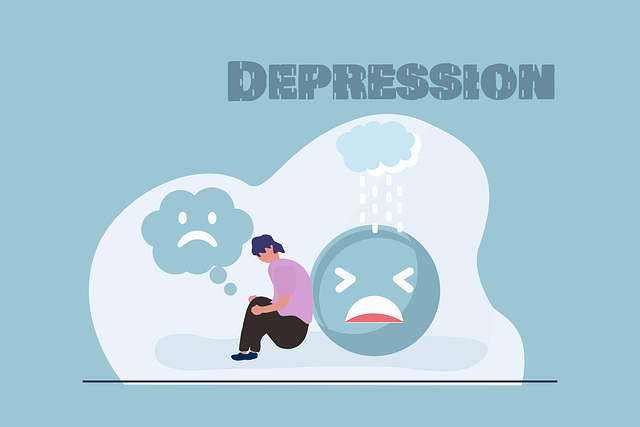Mental health professionals using Parker Abuse Survivors Therapy (PAST) must balance risk assessment with creating safe, supportive environments for vulnerable clients. This involves assessing immediate risks like self-harm while cultivating trust and fostering healing through compassionate practices. PAST principles prioritize tailored interventions, community outreach, and client resilience, empowering survivors of abuse to manage potential threats. Continuous monitoring, burnout prevention, and mindfulness enhance the therapeutic process within this framework, ensuring optimal care for both clients and therapists.
Mental health professionals are often at the forefront of caring for vulnerable individuals, making them not only healers but also guardians against potential risks. This article explores a comprehensive risk assessment framework essential for their safety and that of their clients. We delve into ‘Understanding Risk in Mental Health Practice’, introducing models like the Parker Abuse Survivors Therapy (PAST) approach to mitigate threats. By examining vulnerabilities, implementing PAST strategies, and fostering continuous monitoring, professionals can ensure a secure therapeutic environment.
- Understanding Risk in Mental Health Practice
- The Parker Abuse Survivors Therapy Model
- Identifying Vulnerabilities and Potential Threats
- Implementing Effective Risk Management Strategies
- Continuous Monitoring and Adaptation for Safe Care
Understanding Risk in Mental Health Practice

In mental health practice, understanding risk goes beyond simply identifying potential hazards. It involves a nuanced appreciation of the complex interplay between client vulnerability and the therapeutic environment. Every individual who enters therapy brings their own unique history, including experiences of trauma, abuse, or neglect, as seen in Parker Abuse Survivors Therapy (PAST). These past experiences can significantly impact present-day functioning and emotional responses, making them both a source of healing potential and a risk factor within the therapeutic context.
Mental health professionals must be adept at navigating these complexities through effective risk management planning. This involves not only assessing for risks like self-harm or client violence but also cultivating an environment of safety and trust. Compassion cultivation practices, alongside robust risk assessment tools, can help professionals mitigate potential harms while fostering a space where clients feel understood and supported. Additionally, community outreach program implementation can further enhance risk understanding by promoting early intervention and connecting clients with necessary resources.
The Parker Abuse Survivors Therapy Model

The Parker Abuse Survivors Therapy (PAST) Model is a groundbreaking approach designed to support mental health professionals in addressing complex ethical dilemmas and potential risks within their practice, especially when working with survivors of abuse. This model emphasizes the importance of creating safe and therapeutic environments for individuals who have experienced trauma. By implementing PAST, therapists can effectively manage boundaries, ensure informed consent, and foster resilience among their clients.
The PAST Model encourages professionals to prioritize self-care practices and stress management as integral components of their work. Recognizing the potential for secondary traumatic stress and burnout, this framework promotes public awareness campaigns that educate both professionals and the wider community about the unique challenges faced by survivors of abuse. Through these efforts, mental health practitioners can enhance their ability to provide compassionate and effective care while navigating the delicate balance between personal and professional boundaries.
Identifying Vulnerabilities and Potential Threats

Mental health professionals, like those adhering to Parker Abuse Survivors Therapy (PAT) principles, must be vigilant in identifying vulnerabilities and potential threats within their practice settings. This includes recognizing the unique challenges faced by clients, such as trauma survivors or individuals from marginalized communities, who may be at higher risk of experiencing secondary traumatization or re-traumatization during therapy sessions. By understanding these vulnerabilities, professionals can tailor their approaches to create safe, supportive environments that foster mental wellness.
The process involves not only assessing individual client needs but also considering broader societal factors. For instance, Public Awareness Campaigns Development and Mental Wellness Coaching Programs can play a crucial role in educating both professionals and the public about the nuances of mental health issues. Incorporating Mind Over Matter Principles into therapy practices further strengthens resilience and empowers clients to navigate challenges effectively. This proactive approach not only enhances the therapeutic process but also contributes to broader efforts to promote and maintain mental wellness within communities.
Implementing Effective Risk Management Strategies

Mental health professionals must adopt comprehensive risk management strategies to ensure a safe and supportive environment for their clients, especially those who have experienced abuse. Implementing effective protocols involves a multi-faceted approach tailored to each client’s unique needs. For survivors of complex trauma, such as Parker Abuse Survivors Therapy (PAST) clients, risk assessment should encompass both individual and collective safety measures. This includes creating structured therapy sessions focused on emotional well-being promotion techniques, fostering trust, and encouraging open communication.
Community outreach program implementation can further enhance these efforts by connecting survivors with support networks beyond the therapeutic setting. By integrating community resources, professionals can facilitate inner strength development in clients, empowering them to navigate potential risks proactively. These strategies collectively contribute to a robust risk management framework that prioritizes client safety while fostering resilience and healing.
Continuous Monitoring and Adaptation for Safe Care

Mental health professionals play a critical role in facilitating emotional healing processes for their clients. To ensure safe care, continuous monitoring and adaptation are essential components of Parker Abuse Survivors Therapy (PARST). This involves regularly assessing the patient’s progress, adjusting treatment plans accordingly, and staying attuned to emerging issues or changes in the client’s mental state.
By adopting effective burnout prevention strategies for healthcare providers, such as incorporating mindfulness meditation into daily practice, professionals can maintain optimal performance while mitigating risks of impairment. Continuous monitoring allows for early identification of signs of stress, burnout, or potential harm to both provider and patient, enabling timely interventions and adjustments to care plans within the PARST framework.
Mental health professionals must continually assess risks to ensure safe and effective patient care. By understanding the complexities of risk within their practice, adopting models like the Parker Abuse Survivors Therapy for abuse survivors, and implementing robust strategies to identify vulnerabilities, they can create a secure environment. Continuous monitoring and adaptability are key; regularly reviewing risk assessments and staying updated with best practices enable professionals to provide resilient support, fostering recovery and enhancing patient outcomes.














